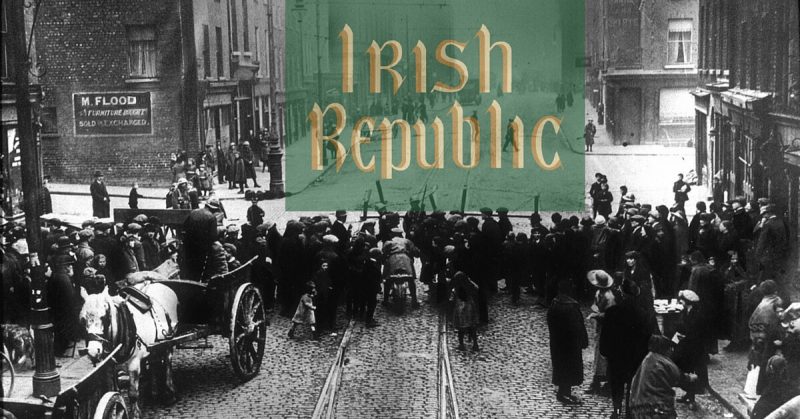A century ago nationalists from the Irish Republican Brotherhood stood up against British rule on the Emerald Isle. The Irish capital of Dublin became ground zero in the battle for Irish sovereignty.
With the revolution, executions and German intervention all part of the struggle, here are five things to know about the Easter Rising.
The Irish Rebels sought help from the Germans.
Easter Rising happened two years into the First World War in 1916. With Britain occupied with Germany on the Western Front, Irish rebel leaders courted military backing from the Germans. Assistance was requested through an American-Irish Republican Group known as the Clarn Na Noile, whose members had developed a relationship with the German government.
Plans were made for a German Expeditionary Force to land on Ireland’s western shores but they never came to fruition. The rebels found themselves stranded ashore alone when the British military captured a German weapons ship.
A miscommunication on the date almost undid The Rising
By April 28, 1928, the British had a mustered force of 19,000 troops strong in Dublin compared to the Irish Republics 1,600 freedom fighters who had answered the call due to mass confusion over the actual date of the Rising.
Originally, the Irish Republican Brotherhood’s Military Council planned the revolt for Good Friday. A subsequent pushback and rescheduling to Easter Sunday had confused the heck of out of everyone in the process.
Dublin was not the only battleground
While Easter Rising is most famously known for taking place on the streets of the Irish capital city, fighting did also take place elsewhere through the Emerald Isle.
Most prominent was the Battle of Ashbourne County Meath, a skirmish outside of Dublin and fought to lure British troops away from the capital. For five hours rebel forces disrupted rail lines and attacked military barracks and held off the British army before they were crushed by arriving reinforcements.
A Rebel leader died on the day he got married
Irish poet, nationalist, and rising leader Joseph Plunkett wed his fiancée, Grace Gifford, at Kilmainham Gaol just eight hours before he was executed. Tragically romantic and poetic at the same time, but the harsh reality records his kissing hot lead only hours after kissing his new bride.
Forever scarred, Gifford would wear her widow’s mourning clothes the rest of her days.
The British executions were remorseless.
The British painted white crosses on the hearts of the Irish dissenters as targets to assist the execution squads in carrying out the executions. This wore heavily on the executioners as usually they were randomly assigned dummy bullets so they did not know who fired the fatal shot.
A leader of the rebellion, James Connolly, was so gravely wounded in battle he needed to be carried to his execution on a stretcher and shot while sitting because he was incapable of standing.
Video
Our friends from History Answers made a very nice video about it!
